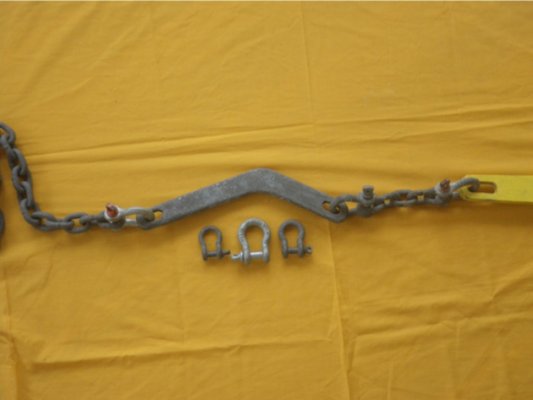....I still stand by my geometry theory that no matter the grove, other things conspire to pop the chain out on retrieval.... with all the heavy machinery experience I have with salvage work and understanding line retirval...i don't think I am missing something simple.
psn, if you re-read my post #80, I think you fall in the last para, where I say, when all else fails, then by all means use a decent swivel, although I must say the ARA flip-link (boomerang) thing does look handy, and is slimmer-lined than a bulky swivel, which then requires more bulky shackles - unless one forks out for the very expensive Ultra-flip swivel, which does look the business, but can one trust those hexagonal headed bolts that you can't seize with wire..? Maybe in your case, machined roller groove and all, that it is the depth and therefore length you need to let out, compared to my average, as to why yours still fails to re-orient properly. Also, my roller was a synthetic, not stainless steel, so maybe a bit more forgiving..? I must admit where I anchored most I seldom had to let out more than about 20-30metres of chain. Perhaps if you usually let out a fair bit more, maybe thats all it takes for our nice groove-linking theory to fail..?
Boomerang or “Flip Links” as groundtackle call them, are a banana-shaped link that takes care of the problem you are facing, only with boomerang you see all the shackles connecting it....and yes roll bars are also an obstacle for the anchor to dive deeper but since the large object on the shank meets the ground first it interferes with the angle the anchor suppose to be at when penetrating.
I don't agree that the roll-bar prevents deep setting. Possibly on the Rocna and Manson, which are quite thick, but I can definitely vouch for the fact the slim one on the S-Sarca does not.
Our chain constantly came up twisted and would jam in the windlass. We installed a Mantus swivel and never had an issue again. Any swivel will resolve the issue. The Mantus swivel is the most robust swivel we could find.
Fair enough Shrew, but I think if coming up the wrong way was a huge issue, having reviewed all this, I'd go for the flip-link solution rather than a swivel. But I know swivels work for many so it's each to his own, I guess. However, I well remember a favourite saying of a past member, Marin, who always used to say, "nothing ever fails - until it does..!"





 :
: